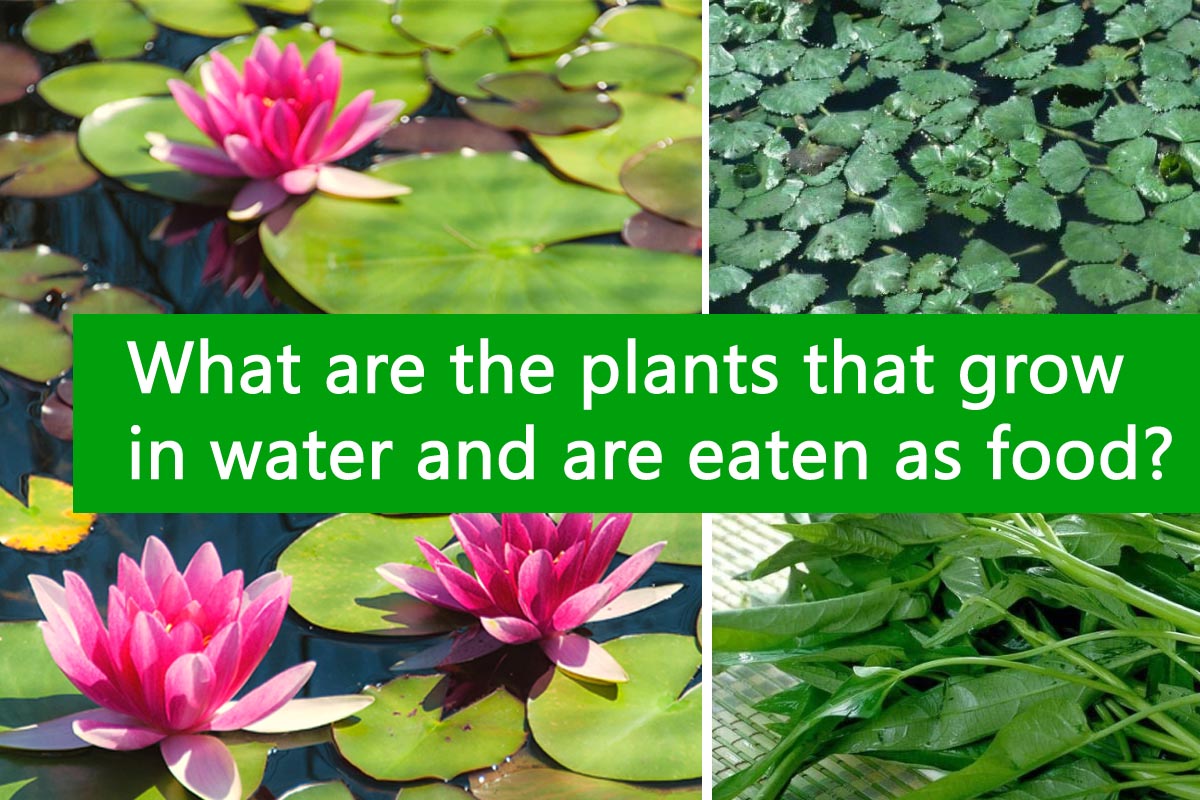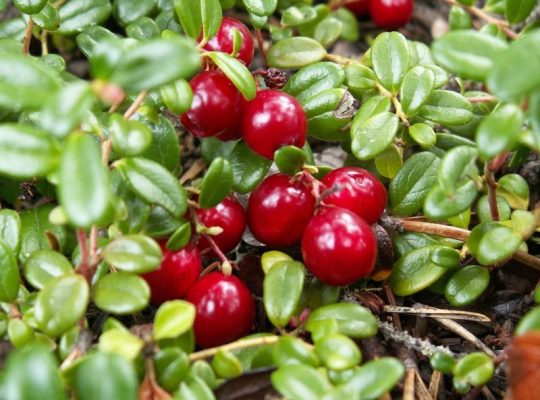
What are the plants that grow in water and are eaten as food?
When we think about growing food, we typically picture traditional gardens and fields. However, there’s a fascinating and often overlooked world of edible plants that thrive in water. From rice paddies to aquatic herbs, these water-grown edibles are not only delicious but also vital for diverse cuisines around the world.
Edible Aquatic Plants: A Guide to Water-Grown Food
- Lotus
- Wild Rice
- Water Chestnut
- Water Spinach
- Watercress
- Cranberry
Lotus
The lotus is a stunning aquatic plant known for its splendid flowers and broad, round leaves that float on the water’s surface. Almost every part of this plant is edible, including the roots, stems, flowers, seeds, and young leaves.

Also Read This : Guidelines for Successfully Transplanting a Rose Bush
Lotus Stem (Kamal Kakdi)
The lotus stem, commonly known as ‘Kamal Kakdi’ in India, is widely used in cooking to make curries, stir-fries, chips, and various delicacies.

Lotus Seed (Makhana or Fox Nuts)
Lotus seeds, also known as ‘Fox Nuts’ or ‘Makhana,’ make for a delightful snack when roasted or fried, similar to popcorn. In India, they are commonly used as dry fruits in desserts, shakes, smoothies, and even curries.
Lotus Petals
Lotus petals are used to make wraps and are often used for garnishing dishes.
Also Read This : Blossoming Beauty: Must-Visit Flower Valleys in India
Wild Rice (Indian Rice or Water Oats)
Wild rice, also known as Indian Rice or Water Oats, has a chewy outer sheath and a tender inner grain with a slightly nutty taste. These plants grow in shallow water in small lakes and slow-flowing streams. They are high in fibre and protein and are recommended for people dealing with chronic constipation.

Also Read This : Elevate Your Decor: The Best Tall Houseplants with Stunning Patterns
Water Chestnut
Water chestnut is not a nut but an aquatic vegetable that grows in marshes underwater in the mud. It has tube-shaped, leafless green stems that can grow to about 1.5 meters. The small, rounded corms have crisp white flesh and can be eaten raw, slightly boiled, or grilled.

Water Spinach
Water spinach is a semi-aquatic, tropical plant grown for its tender shoots and leaves, commonly used as a vegetable in various culinary dishes.

Also Read This : Exploring the Beauty of Nature: Plants That Produce Flowers With 5 Petals
Cranberry
Cranberry (Vaccinium macrocarpon) is a native North American berry. Cranberries are typically cultivated in bogs and very wet soils. They are often submerged in water, primarily for the convenience of harvesting. Hand-picking cranberries are labor-intensive, making mechanical harvesting more suitable for commercial growers. In-home gardens, cranberries can be harvested directly from the bush, similar to blueberries. These low-growing evergreen shrubs can serve as ground cover in very moist soils.
Cranberries are well-known for their health benefits, as they are rich in vitamin C and bioflavonoids. They also contain a natural antibiotic that can benefit urinary tract health.

Also Read This : Dark-Leaved Plants to Create Purple Patches in Your Garden
The Art of Cultivation
Cultivating aquatic edibles can be both traditional and highly specialized. Paddy rice, for instance, is a well-honed tradition passed down through generations. The intricate network of channels and levees ensures consistent water levels and pest control.
On the other hand, hydroponic and aquaponic systems are modern, highly efficient methods for growing aquatic plants. These systems use water as the growing medium and often integrate fish farming for a closed-loop, sustainable food production system.
Also Read This : Maximizing Flowers on Your Hibiscus and Rose Plants
Nutritional Value
Many aquatic plants are rich in essential nutrients. For instance, rice is a staple source of carbohydrates, while watercress is packed with vitamins A and C, iron, and calcium. Lotus roots offer fibre and vitamin C, and water chestnuts provide potassium and fibre.
Culinary Adventures
The world of aquatic plants offers a unique range of flavours and textures to explore in the kitchen. Watercress can add a peppery bite to your salads, while lotus roots can be fried to crispy perfection. Water spinach, with its tender stems, pairs perfectly with garlic and oyster sauce in a stir-fry.
Also Read This : Thirsty Plants: Species That Demand Abundant Watering
Whether you’re a culinary explorer or just looking to diversify your garden, edible aquatic plants are a fascinating and delicious addition to your repertoire. Keep an eye out for these water-grown treasures, and you might discover a new world of flavours and sustainable food sources.
FAQ: Edible Aquatic Plants – A Guide to Water-Grown Food
Question 1: Are all parts of the lotus plant edible?
Answer : Yes, nearly all parts of the lotus plant, including the roots, stems, flowers, seeds, and young leaves, are edible and used in various culinary dishes.
Question 2: How can I use lotus stems in cooking?
Answer : Lotus stems, often known as ‘Kamal Kakdi’ in India, can be used to prepare curries, stir-fries, chips, and other delightful dishes.
Question 3: What are lotus seeds, and how are they consumed?
Answer : Lotus seeds, also called ‘Makhana’ or ‘Fox Nuts,’ are a popular snack when roasted or fried, similar to popcorn. They are used in desserts, shakes, smoothies, and curries in Indian cuisine.
Question 4: Can you explain the culinary uses of lotus petals?
Answer : Lotus petals can be used to create wraps for various fillings and are often employed for garnishing dishes to add an aesthetic touch.
Question 5: What is wild rice, and how can it be prepared?
Answer : Wild rice, or Indian Rice or Water Oats, has a nutty flavour and can be cooked by boiling or steaming. It’s often used in dishes to add a chewy texture and nutty taste.
Question 6: What are the nutritional benefits of water chestnuts?
Answer : Water chestnuts, while not actual nuts have crisp, white corms that can be eaten raw, boiled, or grilled. They are a source of essential nutrients known for their flaky texture.
Question 7: How can water spinach be used in cooking?
Answer : Water spinach is used as a vegetable in various dishes. The tender shoots and leaves are often included in stir-fries and other culinary preparations.
Question 8: Can I grow edible aquatic plants in my garden or backyard?
Answer : Yes, many edible aquatic plants, such as lotus, can be cultivated in garden ponds or containers with appropriate care. However, it’s essential to ensure they have the necessary water conditions to thrive.
Question 9: Are there any special considerations for growing edible aquatic plants at home?
Answer : To successfully grow aquatic edibles at home, you must provide the right water conditions, such as shallow water, and maintain good water quality. Some plants, like lotus, may require proper spacing to flourish.
Question 10: Where can I purchase seeds or plants for edible aquatic varieties like lotus or water chestnuts?
Answer : You can often find seeds or plants for these aquatic edibles at local nurseries, online gardening stores, or speciality suppliers. Be sure to choose reputable sources for healthy and authentic varieties.
Also Read This : Blooming Happiness: Gifting Plants for Diwali




